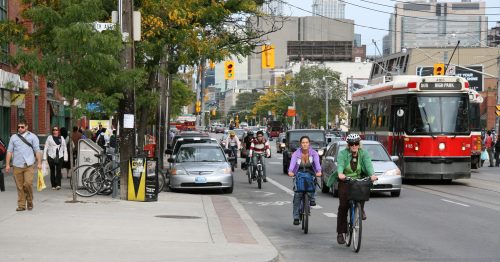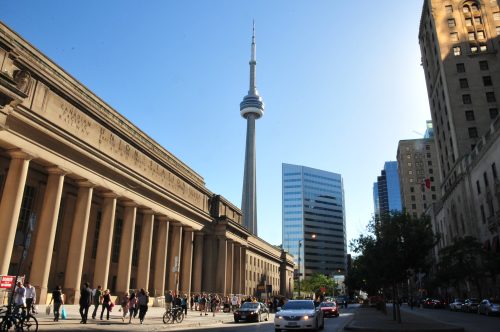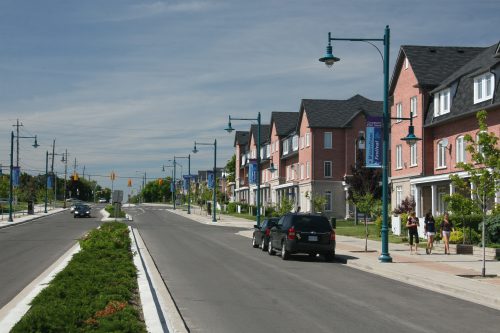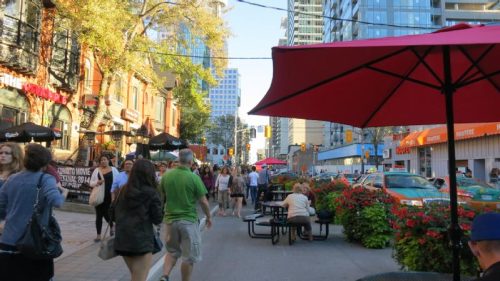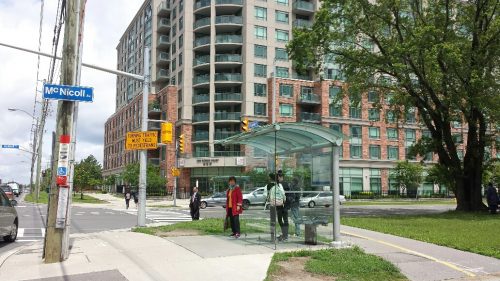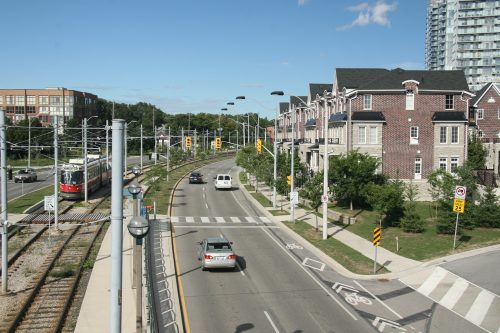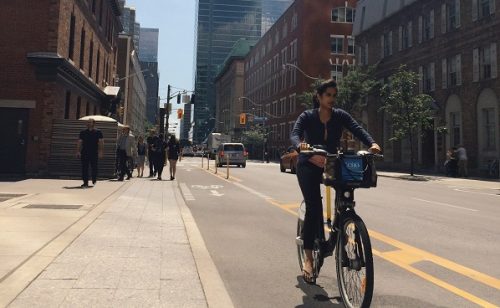
“Complete streets” are streets that are designed to be safe for all users: people who walk, bicycle, take transit or drive, and people of varying ages and levels of ability. They also consider other uses like sidewalk cafés, street furniture, street trees, utilities, and stormwater management.
Streets are essential to Toronto’s physical, social and environmental infrastructure. Toronto has about 5,600 km of streets, roughly the total distance from Toronto to Whitehorse. Almost one quarter of Toronto’s total land area is covered by streets.
Most people think about a street only as a way to travel. Ensuring our streets are designed to function well for all modes of travel will help people choose the mode that best suits their needs for a particular trip, and together will combine into efficient transportation networks keeping all modes of traffic moving and reducing congestion.
Streets are also about more than simply travelling from one place to another. On many streets, the sidewalk is where you can find street trees and landscaping, places to rest and socialize, public art and market space like store displays and outdoor cafes and patios.
The street’s travel lanes, together with the sidewalk and in some cases public spaces on private land next to the street make up the public realm. A vibrant and animated public realm contributes to quality of life, economic prosperity and property value.
Streets also form a vital part of Toronto’s water infrastructure. When it rains, street trees, landscaping and other ‘green infrastructure’ help absorb stormwater so it doesn’t have to be treated at our wastewater treatment plants, and when large storms occur the streets themselves are designed to act like streams, guiding stormwater away from buildings that could flood.
When it snows, streets need to be cleared quickly to ensure safe passage by motor vehicles, pedestrians and bikes. In addition, most streets must also accommodate snow storage. Snow clearing and storage together significantly impact how streets are designed.
Complete streets are designed to consider the needs of all users, such as people who walk, bicycle, take transit or drive, and people of varying ages and levels of ability. They also consider other uses like sidewalk cafés, street furniture, street trees, utilities, stormwater management, and many other uses.
While not every type of use or user may be accommodated on every street, the goal is to build a city with a well-functioning street network that supports and sustains our quality of life. Complete streets ensure that social, economic and environmental priorities are integrated in street planning and design.
There is no single way in which to make a street ‘complete’. It depends on many factors including the character and context of each particular street. The Complete Streets Guidelines will help prioritize the many demands placed upon our streets. They will be applied when streets are constructed, reconstructed, or otherwise improved.
Learning from our own experience and from other cities, Complete Streets Guidelines will help Toronto’s communities by:
The Guidelines were developed in 2015 and 2016, in consultation with the public and stakeholders, followed by an implementation plan in 2017.
While not every type of use of user may be accommodated on every street, the goal is to build a city with a well-functioning street network that supports and sustains our quality of life in Toronto. Complete streets will ensure that social, economic and environmental priorities are integrated in street planning and design.
The City is developing Complete Streets Guidelines to provide a holistic approach for how we design our city streets. This builds on many of the City’s existing policies, guidelines and recent successful street design and construction projects.
More than 700 jurisdictions in Canada and the United States are adopting a complete streets approach. Other leading cities – like New York, Chicago and Boston – have complete streets guidelines. We’re learning from other cities and developing what will work best in Toronto.
There is no single way in which to make a street ‘complete’. It depends on many factors depending on the character and context of each particular street. The Complete Streets Guidelines will help prioritize the many demands placed upon our streets. They will be applied when streets are constructed, reconstructed, or otherwise improved.
| Project Phase | Deadline |
|---|---|
| Phase 1: Initiate project and scan existing policies and documents | 2014 |
| Phase 2: Develop the Complete Streets Guidelines | 2014-2016 |
| Phase 3: Implement the Guidelines and train all relevant stakeholders | 2016 and beyond |
Designing, building and maintaining streets is complicated. There are currently dozens of policies, bylaws, standards and other guiding documents that impact the process. Currently, however, there is no consistent process for designing streets with all users and uses in mind. The Guidelines will help to provide clarity regarding existing City policies and will provide better tools for context-sensitive design.
The concept of streets that are good for all users has been embedded in Toronto’s Official Plan since 2002, and formal recognition of “complete streets” has been introduced with the Official Plan Transportation Review in 2014.
Best practices in Toronto and other cities will form the basis of the new Guidelines. While not every street can accommodate every use, the Guidelines will help street designers allocate space on Toronto’s streets. A key goal is to create a street network that allows users to choose efficient, healthy, safe and attractive routes.
To complement the Guidelines, standards will be developed to provide detailed guidance for construction standards, tree planting, stormwater management and design for accessibility. An improved decision-making process will also be created.
The Vision for complete streets comes from Toronto’s Official Plan, which was adopted by City Council in August 2014, after in-depth public and stakeholder consultation.
City streets are important public open spaces which connect people and places and support the development of sustainable, economically vibrant and complete communities. New and existing City streets will incorporate a ‘complete streets’ approach and be designed to perform their diverse roles by:
The ‘complete streets’ approach recognizes that there is no single way in which to make a street ‘complete’. It depends on numerous factors whose relative importance varies according to the character and context of each particular street. While it may not be viable or appropriate to accommodate every type of user or use on every streets, the overall objective is to create a well-functioning street network that is planned and designed to provide safe access and efficient operation for all street activities and functions. Guidelines for applying the ‘complete streets’ approach will be developed to assist in resolving and balancing the competing demands placed upon the use of street rights-of-way and applied when streets are constructed, reconstructed, or otherwise improved.
The City’s complete streets vision for our approach to street design is: Streets for people, placemaking and prosperity.
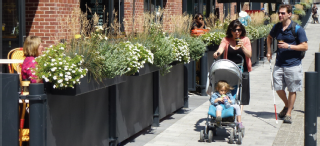
Streets should be safe and accessible for people of all ages, genders and abilities, especially the most vulnerable — children, older adults, and people with disabilities.
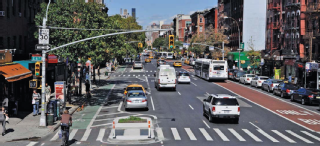
Streets should be designed to create connected networks for a variety of travel modes and give people choices for how they move around the city, whether on foot, bicycle, on transit, or in a motor vehicle.
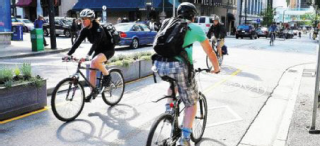
Streets should help promote healthy and active lifestyles by making streets more comfortable and inviting for people to walk and bicycle and be physically active.
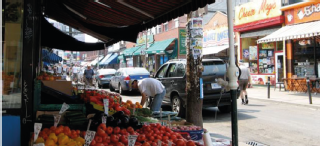
Streets should respond to the local area context, current and future land uses, and the relationships with adjacent buildings. There is no one-size-fits-all design approach. Streets should fit comfortably within the built and natural environment and reflect local identity and priorities.
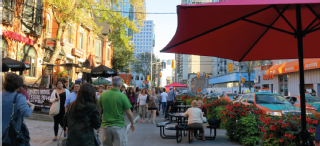
Streets should strive to be vibrant and attractive public spaces where people want to spend time engaging in social, civic, and recreational activities. Streets should be beautiful, attractive and inviting spaces that encourage investment, and promote a sense of civic pride.
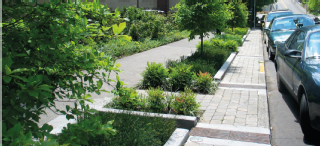
Streets should improve the city’s environmental sustainability by enhancing the tree canopy and landscaping, reducing urban heat island effects, reducing stormwater runoff, reducing energy consumption, and reducing greenhouse gas emissions.
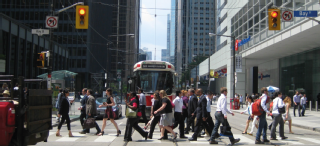
Streets should support the city’s economic vitality by helping move people and goods efficiently and by supporting local neighbourhood shopping areas. The quality and vitality of a street influences and reflects the quality and vitality of economic activity along it.
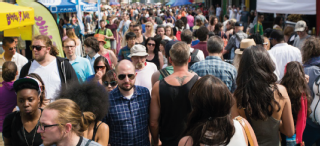
Streets should be developed to remove barriers so people of all incomes, races, ages, genders and abilities can safely use and benefit from Toronto’s streets. Toronto’s streets should be inclusive for everyone and help provide people with opportunities to thrive.
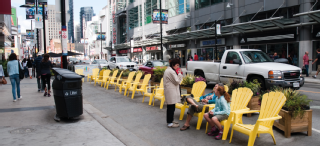
Streets should be flexible and able to adapt to the city‘s changing needs and priorities over time. The design of complete streets should consider economic, social, and environmental benefits and costs, as well as construction, operations, and maintenance.
Lots of people and organizations were involved in the process for developing the Complete Streets Guidelines including City Divisions such as Transportation Services and City Planning, and Agencies, such as the TTC and Toronto Hydro.
Technical consultants were hired to help write the Guidelines, based on advice and input from internal and external stakeholders including industry experts, advocacy groups and the public.
The Technical Advisory Committee (TAC) comprises senior-level staff made up of all the divisions and agencies that use, impact, or have interest in streets and streets design. This committee is responsible for providing subject matter expertise and advice, communicating project goals and progress within their respective divisions/agencies.More than 25 divisions, agencies and organizations are represented on the TAC.
A Stakeholder Advisory Group (SAG) was established to provide advice and feedback to the Project Team at key points in the development of the Complete Streets Guidelines. The stakeholders include representatives of a broad range of organizations that impact Toronto’s streets and vice versa and/or are involved in planning, design, construction, and management of Toronto’s streets.
